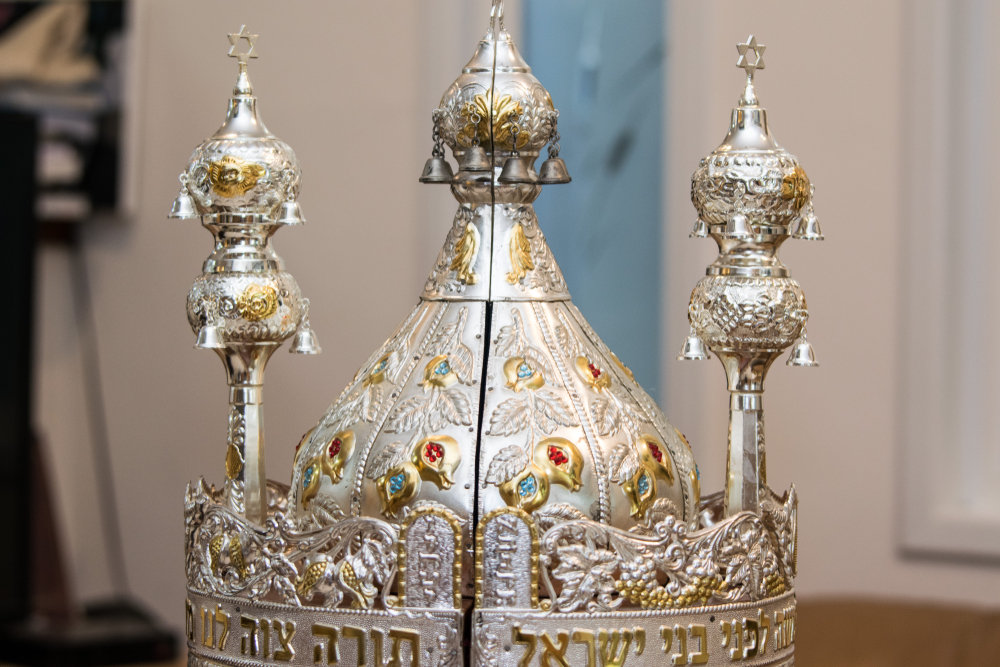MORE PRECIOUS THAN PEARLS

SHAVUOTH
by Rabbi Yosef Farhi
There is a custom to read Megillath Ruth on Shavuoth. What is the meaning of this custom? There are different reasons. Here is a thought I had.
Our Rabbis teach that a Talmid Hacham who is a mamzer deserves more respect than a Kohen Gadol who is a simpleton. This is learnt from the passuk יְקָ֣רָה הִ֭יא מִפְּנִינִ֑ים which literally means that Torah is more valuable than pearls. )Mishlei 3; 15) Our Rabbis ask, how could the value of Torah even be compared to the value of pearls, something which is merely material? From here, the Rabbis read this passuk with a unique twist, to teach us something amazing. The Torah is more valuable than לפני ולפנים, the Holy of Holies. (Horayut 13a; Sotah 4b)Imagine, after Covid-19, we are all standing inside the Beit Hamikdash on Yom Kippur, and before the Kohen Gadol enters the Holy of Holies, he comes to you and asks you if you want him to pray for your loved ones while inside. And you tell him, “No, it’s okay. I already have some Yeshiva students learning in our merit. But thanks! What?! That’s right! The Torah is greater than the Holy of Holies.
In the times when the words that compare the Torah to entering the Holy of Holies were written, entering the Holy of Holies was an experience of magnitude that people today cannot even imagine. There are far fewer things today that people are passionate about, far less concepts of issues of great significance and value. For many, being at the Super Bowl or the World Series is the most exciting and biggest event that their minds can conceive of. But whatever the greatest experience you can possibly imagine, learning Torah is greater.
Life is like a parachute jump: you have to get it right the first time. We all have one life to live. Make sure you live life to the fullest. Bronnie Ware, an Australian palliative care nurse, wrote a book The Top Five Regrets of the Dying. She’s noticed themes and trends among people whom she’s assisted. Here are the top five life regrets, according to Ware. I wish I had let myself be happier. I wish I hadn’t worked so hard. I wish I’d had the courage to live a life true to myself, not the life others expected of me. I wish I’d had the courage to express my feelings. I wish I had stayed in touch with my friends.
Whenever I want to clarify what is most important in life, I do futuristic regretful thinking. What is it that I will regret, one day. The greatest regret of the Torah Jew is going to be not learning or teaching more Torah, not doing more Mitzvoth, not trusting in G-d more. This explains the law of loeg larash, not to wear tzizit strings openly in the cemetery so as not to cause jealousy to the dead: you can visit the cemetery with your Lamborghini car, wearing a Patek Philippe watch, a Brioni suit, Ferragamo shoes and belt. This does not make the dead there jealous whatsoever. But if your tzitzit string is sticking out, this is jealousy they cannot handle! There is nothing more that the dead want in the cemetery than being able to wear tzitzit, put on tefillin, or learn another few words of Torah!! (Berachot 18a)
At the peak of the love story in between the Jewish Nation and G-d, G-d gives us the Torah. The Torah is not just a book that He gave to His Beloved, the Jewish Nation. It is not just an instruction manual how to live. It is life itself. כי הם חיינו ואורך ימינו. Without Torah, you have no life, no meaning to it all. There is nothing more precious than Torah.
This is why we read the story of Ruth the royal princess, granddaughter of King Eglon, who converted. She gave it all up, for the Torah. Literally. She was willing to move to the Holy Land with Naomi and start from the bottom, with nothing. Because she knew that the only way to live with meaning, and the only way to die with meaning, is as a Torah Jew. יקרה היא מפנינים.
One of the reasons why we eat a dairy meal on Shavuoth is because the word for cheese, in Hebrew, is גבינה. Mt. Sinai had five names, one of which was הר גבנונים. Why was it called that name? The word גיבנת means hump, or peak: this was the peak of all experiences. The Torah refers to a hunchback as a גבן, because of the hump in his back, sharing the root of the word גבוה. Although Har Sinai was not the tallest of mountains, but it was given that name for it brought to the world the way to live a life of peak performance, by living a life of Torah. This is the lesson of Ruth. This is the lesson of Shavuoth.
Here are the Selfie Steps to keep Torah life your highest priority in life:
- Ask yourself each day, “What am I willing to die for? What am I willing to live life for, even if it is not the life I wished for?”
- What am I going to regret on my last days, at my last breaths?
- Why am I living a life of an Orthodox Jew? Why did my ancestors give up so much to live an Orthodox life?
- G-d gave me, is giving me, and will give me, so much. How can I get to know Him better through His Torah?
IF YOU ARE ENJOYING THESE ARTICLES FREE EACH WEEK, PLEASE HELP SUPPORT THIS PUBLICATION!
One week’s sponsor to cover all costs is $100. These articles are being distributed to over 20 thousand readers each week!
To support this publication, or receive it by e-mail, please email me at rabbiyoseffarhi@gmail.com.

